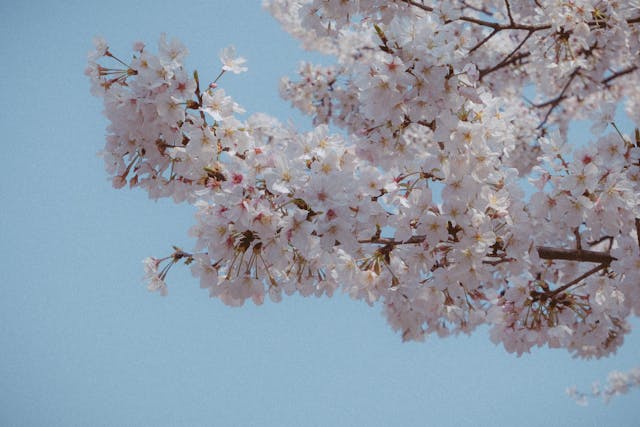

In late March and early April, Rome is colored by the spectacle of hanami: the spectacular blossoming of the cherry trees.
The fascinating custom of observing the cherry blossom trees has now largely crossed the borders of Japan and conquered the West, particularly Rome, where the mild and sunny climate ensures a beautiful bloom every year.
In this article we suggest the best places to admirehanami in Rome and other destinations in Italy.
Hanami literally means "flower watching," referring specifically to sakura, the cherry blossoms. This is an ancient Japanese tradition that is strongly rooted in Japanese culture. Cherry blossoms are a symbol of rebirth, but also of the brevity and fragility of life.
Beautiful and ephemeral, sakuras are historically linked to samurai culture: warriors known for their purity of soul and loyalty, but aware that their existence could be short and end abruptly.
The tradition of hanami, although ancient, is still very much felt and practiced. In Japan, families celebrate the blossoming with picnics under cherry trees. In Tokyo's main parks, attendance is so high that to secure a spot you have to arrive the night before!
While the cherry blossom period in Japan varies greatly by region (from March-April in the south of the country to mid-May in Hokkaidō), hanami in Rome generally takes place from late March to mid-April. If you want to know where to go to watch the spectacle, here are some of the best places to enjoy hanami in Rome:
The quintessential place to observe the blossoming of pink blossoms is definitely the Japan Walk, located inside the Eur Pond Park. Here you can admire more than a hundred cherry trees, donated to the city of Rome by the Japanese prime minister, in 1959.
For Romans, enjoying the hanami at the Laghetto dell'Eur is now a tradition: just spread a cloth on the lawn and be enchanted by the spectacle of the bloom.
On the weekend of April 12 and 13, 2025, the "Hanami at the Botanical Garden" event will be held atLa Sapienza University in Rome. The festival program includes two days of events, workshops, talks and pills about Japan.
The days begin with forest bathing, or a slow and mindful guided walk in nature, and continue with insights into Japanese culture, such as the art of Kokedama, haiku poetry, and manga. There will also be an opportunity to participate in a workshop to learn how to write one's name in shodō script, or enjoy building elaborate origami.
In the Parioli district, the Japanese garden of theJapanese Cultural Institute offers an evocative setting for hanami. This garden was the first in Italy to be designed by a Japanese landscape architect-Nakajima Ken.
Reservations are required to access the garden, which ensures a more intimate experience. In addition to flowering, it is possible to visit exhibitions organized by the institute and consult more than the 4,000 Italian-language books devoted to Japanese culture in the library.
If you are not in Rome or want to take advantage of hanami to explore other Italian destinations, the possibilities are numerous.
In Piedmont, for example, hanami is observed in the beautiful gardens of the Reggia di Venaria, which organizes concerts, yoga classes among the cherry trees and outdoor painting workshops for the occasion.
In the Veneto region of Italy, on the road between the towns of Thiene and Marostica, there is an itinerary(Colceresa trail) that crosses hills covered with cherry, peach and almond trees. This is the area where the famous Marostica IGP cherry is grown.
The village of Vignola, in Emilia Romagna, is also famous for its cherry tree plantations. Here the town holds an annual Cherry Tree Festival, which this year will take place from April 5 to 13.
Admiring hanami in Rome or another Italian location is an unmissable opportunity to celebrate the arrival of spring and the encounter with fascinating Japanese culture.

Lascia un commento
Comments